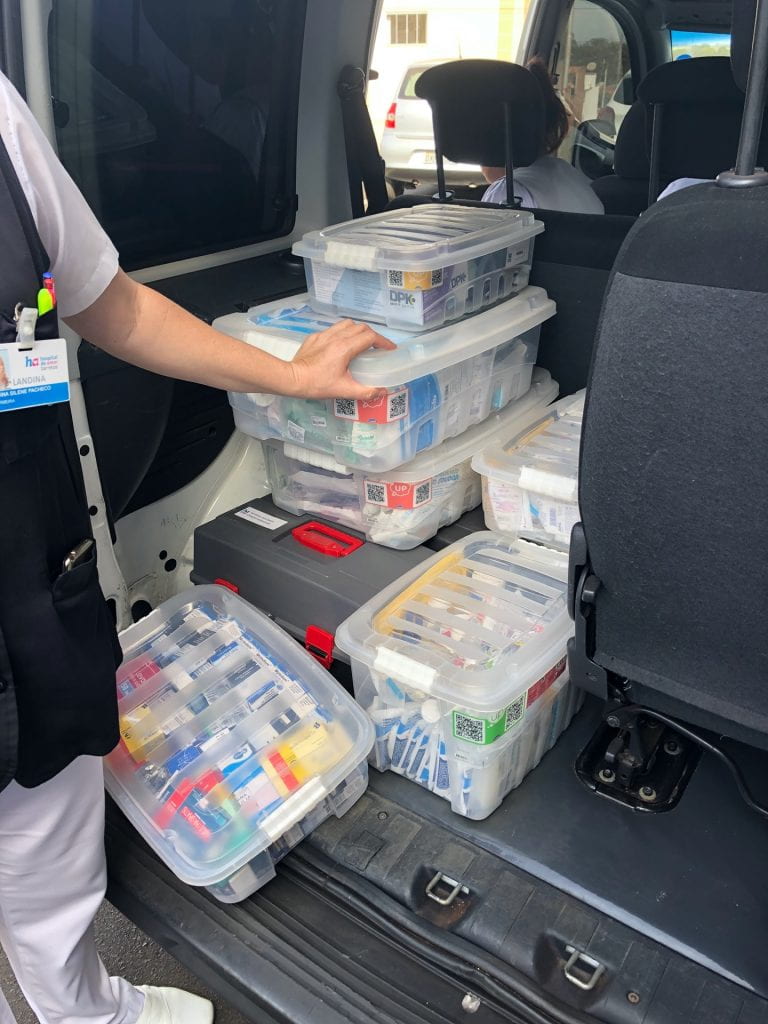Oi! Beleza?
My fifth week in Barretos has come and gone. This past week Paula and I attended a few needs finding meetings but spent the majority of our week compiling research for our app and creating the login screen. We attended meetings in the physical therapy, pathology, and mobile unit departments. Like last week I will only discuss one of the potential projects we encountered to help limit the length of my blog post.
I found our meeting with the mobile unit department to be particularly interesting and representative of the general structure which must be taken into account throughout Hospital de Amor when treating patients. As such I have chosen to share their need and some background information. For those who do not know the population of Barretos is approximately 120,000 people. Hospital de Amor though does not only serve those who fall within the city limits. Their treatment is free and open to any Brazilian citizen, especially to those who live in one of the 16 municipalities in the state of São Paulo. I mention the word especially as Hospital de Amor has mobile treatment units (CT scanners, nurse/doctor teams, etc.) who travel throughout the entire state of São Paulo to the homes of patients who have a mobility rating of less than 50%. A rating of less than 50% means it would be difficult or potentially dangerous for a patient to make the trip to the main set of hospitals located in Barretos to receive treatment. These mobile unit teams have a unique set of requirements as they aim to provide the same level of treatment a patient would receive in one of the main hospitals under more constrained conditions. To provide this treatment a large amount of planning and packing must be done every day to ensure these teams have all the necessary equipment. The problem, as presented to us by nurse Landina, is that many of the smaller mobile unit groups will use a van of sorts to travel. These vans though do not have a structural system in place to hold all the equipment and medicine. Then once at a patient’s home, they have no easy way to remove the equipment and bring it into the home. Thus nurse Landina and her team would like a structure which would allow them to pack all of their equipment into their van in an organized manner and have a way to move this equipment into the home of a patient. This device, which would be able to bring the materials into the home, would also need to be able to act as a table and provide a sterile work environment. This is an exciting project which could have diverse and far spread impacts. Paula and I are excited to bring the project back to Rice 360 in Houston for potential development!

This is the interior of one of the mobile units used to travel throughout the state of São Paulo. Nurse Landina is showing Paula and I the standard materials taken for a day trip.

Here nurse Landina is showing how many items must be carried to lower the number of trips taken between the van and a patient’s home.
In addition to our needs finding meetings, Paula and I have been performing extensive research into what goes into building an app and how best to code the components we need in our app. This week we chose to focus on how to integrate a backend server into our app. A backend server is a location where the information an app creates can be stored. For our app, the information which will need to be stored are the logins of each patient and the messages/images which will be communicated between Dr. Deny and his patients. We have chosen to use Firebase by Google as our backend server due to their simpler app integration process and the built-in security in information transfer between the app and database. Paula and I through further discussions with Dr. Deny and each other have decided to change the means by which patients will send their information. Originally we had planned to have a patient be guided through the process of filling out a form with their symptoms and how to take photos of their mouth. This information would have then been compiled into an email which would have been sent to Dr. Deny. Upon further research on in-app possibilities and talking with Dr. Deny, we have now decided to build a messaging platform into the app. This thus means patients will be able to send images of their mouth and text Dr. Deny through a Whatsapp-like platform. This platform will be more familiar to patients, many of whom are older, while at the same time creating an easier means for them to see their history of communication with Dr. Deny. Moving forward this week we intend to finish the login and registration screen for a patient, create a homepage, and also integrate a button so patients can dial the hospital to make an appointment. I look forward to working more on the app this week and sharing screenshots of what we have developed next blog post!
Até logo!
